History
Korea Had Long History of Trafficking in Women—Even Before the Japanese Came
Published
6 years agoon

This piece was first published under the title “Seoul University professor denied the theory of comfort women as the sex slave” in Monthly Hanada Selection: Hopeless South Korea and Tragic President Park Geun-hye, a special December 2016 edition of the Japanese monthly magazine. JAPAN Forward is serializing it.
(Second of 3 parts)
Part 1: Why Korean Professor Believes Comfort Women Were Not Sex Slaves
In his online lecture on the comfort women issue, Seoul National University professor emeritus of economics Lee Young-hoon next turned from a discussion of Korea under Japanese rule to Korea during the 17th—part of a long period when it was governed by the Chosun Dynasty.
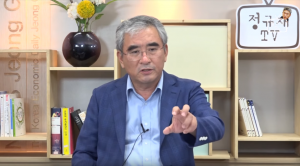
In 1996, a South Korean professor published a work titled The Life of a 17th-Century Military Official Posted to the Northern Territories as Seen in “The Diary of a Northern Posting.” It chronicles the experiences of military officer named Park, who kept a diary when he was sent to the northern territories from the dynastic court to defend the border with China. In his diary, Park writes of the women who shared his bed as he journeyed north.
According to Park’s diary, over an 11-month period from December 11, 1644, to October 25, 1645, he slept with 23 different women: kisaeng (song-and-dance girls—who often doubled as prostitutes and concubines) who serviced government officials, maidservants, and barmaids. After he arrived at his post, Park was provided with a kisaeng, designated as his local wife while he was stationed in the area.
Park’s father had also been sent to the same region and, perhaps not coindenetally, Park became intimate with the daughter of a kisaeng who had been the local wife of Park’s father while he was in the country. Professor Lee gave detailed evidence, quoting from written sources, of the repeated sexually-driven abductions carried out by the yangban—the group of literary and military officials who ruled South Korea—against official kisaeng, servants, and other women.
Lee then turned to research conducted on the marital relationships between yangban and servants in Gangwon Province from 1678 to 1885. According to this research, only 107 households (58%) comprised a normal pairing of one husband and one wife. Fifteen households (8%) consisted of one wife and two or more husbands. Thirty-seven households (20%) were made up of one wife and her children of unknown paternity. Twenty-five households (14%) were formed by a father and his children of unknown maternity. In other words, some 40% of all yangban-maidservant households were broken homes.
Widespread Trafficking in Purchased Girls
Based on this, Lee argued that “the yangban used violence to control maidservants,” and that “there was a breakdown in ethical household life due to the poverty which had driven women to work as maidservants. It was not until the modern period that a stable family system became fixed among the middle class. There were many cases in which common people sold their daughters off as prostitutes. There were reading rooms for prostitutes in Andong, in Gyeongsangbuk Province, and reading rooms for kisaeng in Pyongyang. The common people sold their daughters in droves wherever there were many yangban.”
Of the 170 women who later came forward to the South Korean government, claiming to have been abducted by the Japanese military and made to work as comfort women, 57% claimed to have been abducted in Gyeongsangbuk Province. Lee contends the reason for this was “not that Gyeongsangbuk Province is close to Pusan, but rather, that there were many yangban in that area. The comfort women were an extension of the heavy human trafficking that took place in Gyeongsangbuk during the Chosun Dynasty. The use of violence to control the common people and servants, as well as poverty among the servants and commoners, was the worst wherever the yangban were the most numerous. As a result, it became virtually impossible for maidservants to set up normal, ethical households, and many were forced to sell their daughters into prostitution.”
Lee then shifts the debate over the Japanese control of the Korean Peninsula. He quoted from an essay written in 1934 titled, “The Daughters Who Are Sold Off,” which stated that there were many parents in Korea who sold their daughters—at a time before the comfort woman system even existed.
“The classmates of a girl of 15 living in Daegu who was sold by her 37-year-old father for 160 yen were raising money for the mom-kkap (money to buy someone into or out of prostitution) in order to get her back. Throughout the Orient, it is in no way a rare thing for parents to sell their daughters…. It is also not unheard of for men to deceive other families’ wives and daughters and sell them into prostitution, or for a husband to sell his own wife into prostitution…. It is a profitable business for both sides—the ones who sell the women, and the ones who buy them. These women go on to be what are known as geisha, licensed prostitutes, drink-pouring girls, and concubines.”
The First Restrictions on Prostitution
The following article appeared on March 28, 1939, in the Maeil Sinmun, a newspaper published in Korea:
A weeping daughter told the police of the story of her parents, blinded by greed, trying to sell her. It was worse than death, she said.
The daughter, who had been working as a kisaeng, was almost sold by her parents after they accepted 1,300 yen from a certain Shin, who ran a brothel in Manchuria. But she fled to the police, saying that she was unable to work as a prostitute selling her own flesh. The police have summoned the parents and are now investigating the situation.
Lee pointed out differences between the Chosun Period and the period of Japanese rule of the Korean peninsula.
“Until the 19th century, it was rare for parents to sell their daughters. Repression based on status was very strong. Human trafficking became much more common once the age of industrialization began. The legal proof of this is the licensed prostitution system.”
Licensed Prostitution Brought to Korea
Lee’s operating assumption in debating the comfort women system under the Japanese military is that, in order to understand the Japanese military comfort women, one must first understand the licensed prostitution system that Japan brought to Korea. He explains:
In 1916, the government-general of Korea instituted regulations governing prostitutes operating out of rented premises. There were already regulations in place for drink-pouring girls and geisha, but the 1916 regulations were the first for prostitutes. This is the legal grounds for parents’ selling of their daughters.
The parents received an advance payment. If the daughter refused to accompany the buyer, then the brothel owner forcibly abducted her. There were 34 of these brothels throughout Korea. The regulations in question were extremely strict in their regulation of these brothels.
Regulations for Licensed Prostitution
* A number or code is to be displayed at the entrance to each customer room.
* Prostitutes may not be forced into revising their contracts or changing their madams (their geisha houses) against their will.
* No prostitute may be prevented, without the proper authority, from entering into a contract, leaving prostitution work, or communicating or meeting with others.
* Those running rental properties are to keep a supplemental record showing the names of all customers. The police chief is to inspect prior to use, and a record is to be kept of each customer visit.
* The rental property managers are to keep two rental calculation books for each prostitute. One book is to be given to the prostitute. The previous month’s rentals are to be recorded in detail by the third of each month, and these tallies are to be affirmed by the manager and the prostitute both affixing their seal to the books.
* A woman who wishes to begin working as a prostitute must first submit a request form, stamped by both herself and the rental property manager, on which is listed her family registry, address, name, the name she will use as a prostitute, birthdate, and place of business. She must present this form, along with the following documents, in person to the chief of police in order to obtain his permission to begin work.
1/ A letter of consent from her father, mother, or head of household
2/ A certificate of authenticity for the seal used by the signer of the letter of consent
3/ A certified true copy of her family registry
4/ The contracts relating to her prostitution business and advance money
5/ A document explaining the woman’s reasons for becoming a prostitute
6/ A medical examination form signed by a designated physician
* No prostitution work may be engaged in outside of the rental property.
* The prostitute may not work outside of the designated area without the written permission of the chief of police.
* Prostitutes must undergo regular or ad hoc medical examinations.
* After receiving permission to begin working as a prostitute, a woman must inform the chief of police before actually engaging in prostitution for the first time.
* When ceasing work as a prostitute, a woman must appear in person before the chief of police in order to present a notification form to which has been attached a letter of permission.
* Rental property managers may not make prostitutes apply makeup in an area visible from outside, or loiter or line up in front of the place of business.
It was obligatory to keep a ledger of brothel patrons. This ledger contained information about when each patron arrived and left (down to the hour), distinguishing facial features and articles of clothing, the prostitution names of the prostitutes he requested, the amount of money he spent on entertainment, and his address, occupation, name, and age.
Medical exams for venereal disease were also carried out with exacting rigor: 45 times per year for Korean prostitutes, and 54 times per year for Japanese prostitutes. As a result, the prevalence of venereal disease among Korean prostitutes was 6%, and 3.8% for Japanese prostitutes.
Confusion Over Terms
There were 200,000 prostitutes in Korea working under this system of licensed prostitution, serving a total of 30 million clients on a monthly basis. This works out to 150 clients per prostitute each month— about five per day.
Lee pointed out:
Licensed prostitution is legal in parts of Europe even today. Licensed prostitutes have formed labor unions and are the recipients of social welfare. Japanese society functions such that the emperor stands at society’s pinnacle. Prostitutes, too, had their own labor unions [in Japan]. Their interests were thus acknowledged by the rest of society…. We must understand at least this much about the history surrounding the licensed prostitution system in order to understand the issue of comfort women working for the Japanese military.
The comfort women system was established by the Japanese military, according to Lee, for a variety of reasons, like: preventing the spread of venereal disease, preventing soldiers from committing the crime of rape against civilian women, and to preventing classified information leaks that could occur if soldiers patronized prostitutes working in the private sector.
“The military sent enlistment requests to the Department of the Army, the Governor-General of Korea, the military in Korea, the Governor-General of Taiwan, and the military in Taiwan. These four entities selected and authorized recruitment brokers. These brokers used contractors who employed the human trafficking methods already fully in place under the licensed prostitution system in order to recruit comfort women. These methods were to pay advance money to the parents [of the women recruited].”
Lee next introduced pre-existing research, which analyzes the testimonies of former comfort women who have come forward by name. This research finds that, among these comfort women, 82 were recruited through employment fraud, 62 through threats or violence, 4 were subjected to human trafficking, and 5 were kidnapped and/or abducted. However, “these four [categories] are the same thing.”

In other words, under the licensed prostitution system, the fact that parents took advance money in exchange for their daughters is employment fraud, while violence was used against daughters who resisted the brokers and later attempted to run away.
Lee openly and plainly rejected the notion that there was any abduction by the military or by government authorities. “It is not factual to say that women were set upon on the roadsides and thrown into trucks. It is not factual to say that women were abducted or that there were hunts for sex slaves.”
Comfort Women’s Changing Oral Accounts
It was a Japanese person who caused the South Korean people to believe such things, Lee said:
These stories were made up by a Japanese man. Yoshida Seiji, a Japanese person, wrote a book which became a bestseller. This book came to Korea and, it was from this point, that South Koreans first began to believe that there had been these kinds of forced abductions [by the military]. The Jeju Sinmun newspaper reported that Yoshida’s tales were not factual.
Lee told his viewers that it took 30 years for the major Japanese newspapers to retract their reporting on Yoshida’s remarks.
He then turned the discussion to the testimonies of former comfort women. These testimonies change each time they are repeated, with each listener seemingly being told what he or she wants to hear. They change in order to conceal the grudge borne against the parents who sold their daughters.
One must be extremely careful when using oral testimonies as historical materials. Oral testimonies were first used in historical studies in the 1920s, when testimonies were taken from former slaves in the United States. These testimonies were useful as reference materials, but the position of the historical community is that one must exercise great care to differentiate fact from fiction when using these testimonies as primary-source materials. One need only look at the oral testimonies given by the former comfort women in order to appreciate the great difficulty involved in relying solely upon these sources in trying to determine what is historically factual.
Human Trafficking and Employment Fraud
Lee then used a chart to introduce a portion of the materials submitted to the South Korean government’s fact-finding committee on forced mobilization by the surviving family members of former comfort women. The professor confirmed the family members’ understanding that what happened was “employment fraud” and “human trafficking.” He then turned to research conducted by a female South Korean scholar, who tracked down the family members of former comfort women whose names and addresses she learned from a ledger of Koreans then residing in Indonesia. Almost all of those family members also testified that these comfort women had been subjected to “employment fraud.”
Lee then cited the following passage from a document titled “Overall Status of Koreans Resident in North China,” published in 1941 by the Beijing branch office of the Government-General of Korea: “Due to their particular language skills and tenacious lifestyles, [Korean men] have been able to keep up with the military’s advance, or even precede it…bringing with them a certain type of woman and setting up military comfort stations…. They make enormous profits in areas that are still not politically stable, and advance to the front lines.”
This same document reports that there were 732 Korean prostitutes and drink-pouring girls in north China. Lee estimates that there were, at most, 1,000 Korean comfort women in this same area. He later used this figure at the end of the lecture in estimating the total number of comfort women.
(To be concluded)
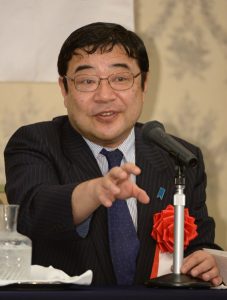
Tsutomu Nishioka is a member of the planning committee at the Japan Institute for National Fundamentals and a visiting professor at Reitaku University. He was born in 1956 in Tokyo, and graduated from the International Christian University. He worked at the Japanese embassy in South Korea as a researcher from 1982 to 1984, and served as editor in chief of monthly magazine Gendai Korea. He is chairman of National Association for the Rescue of Japanese Kidnapped by North Korea (NARKN).
You may like
-


Nobuyuki Suzuki Case Draws Out for 10 Years, At Last Someone in South Korea Calls for Dropping It
-


AI Manipulation in Influence Operations and How to Deal With It
-


EDITORIAL | Caution In South Korea as Smear Tactics Prevail in Election
-


How the Emerging China-Russia Alliance Uses Military Drills for Geopolitical Grandstanding
-


INTERVIEW | Kim Yung-ho is Seoul's Forward-Thinking Unification Minister
-


South Korea General Election: What Do the Results Mean?
1 Comment
You must be logged in to post a comment Login
Leave a Reply
Cancel reply
Leave a Reply
You must be logged in to post a comment.


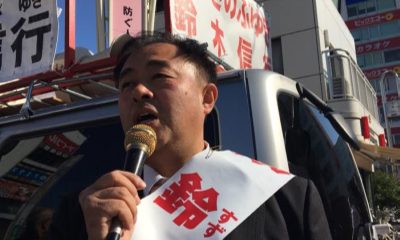







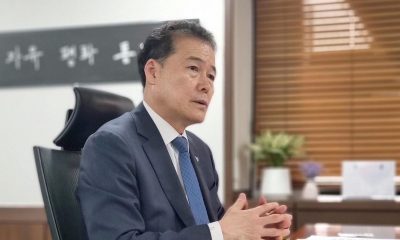

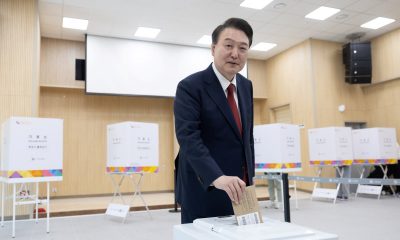



Toshi Hayakawa
November 28, 2017 at 8:19 pm
Wrong Headline
"Korea Had Long History of Trafficking in Women—Even Before the Japanese Came"
indirectly but clearly states Korea had trafficking when and/or after the Japanese came.
One might think, "Oh, even before the Japanese trafficked Koreans, I see."
Please delete the "Even."